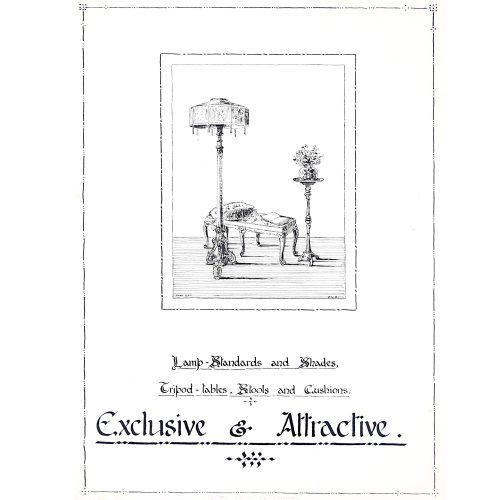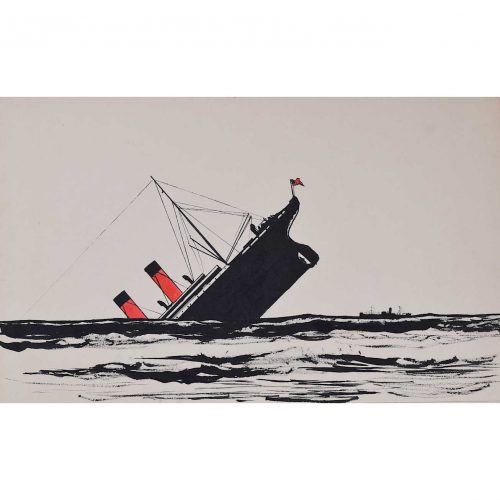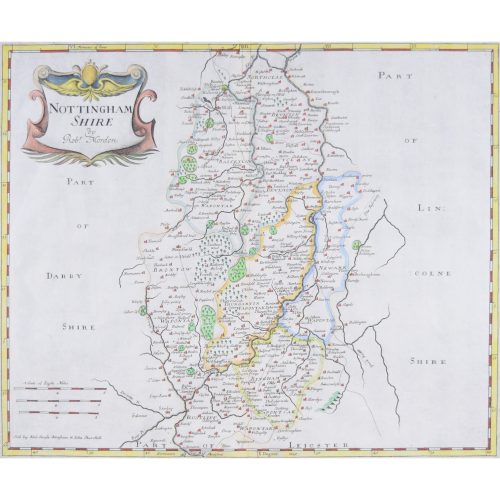-
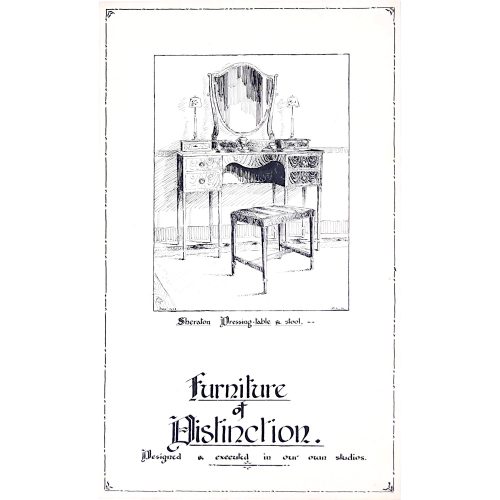
Douglas L Hadden (British, 20th century) Design for Poster/Showcard 'Furniture of Distinction'
33x20cm Pen and ink c. 1930 Hadden was a senior designer for Geo M Hammer, designers and retailers of school and ecclesiastical furniture. Their lift-top school desks are particularly well regarded, and always carried their brass name plate. Hammer were renowned for their interior woodwork, they were commissioned to undertake the choir stalls in Sir Basil Spence’s ground-breaking Coventry Cathedral. Dick Russell (brother of Gordon Russell and who worked for his brother before World War Two) famously designed the chairs to be used by the congregation; as all-wood stacking chairs they were innovative at the time. As senior designer, Hadden was at the heart of the Coventry project. Hadden was educated at the Wycombe School of Art and quickly rose to the position of chief designer at Burkles, early in his career. During the World War Two he worked as an air warden in Cowley and later within the Royal Artillery, before returning to work for the Italian firm BIANOS, helping to shift its production of spitfires propellers back to peace-time wood-work. For his 7th and finale job he worked as chief designer for one of the largest and oldest firms in Britain, Geo. M Hammer. With a wide experience of designing furniture to a high standard, Hadden worked for colleges, universities, schools, libraries, monasteries and nunneries, churches and abbeys, cathedrals, synagogues and private houses. In addition to furnishings, Hadden took pride in producing fine pianos for many of these residences. Through Geo M Hammer, Hadden's designs can be found across the British Isles today, with many further appearing in America. If you are interested email info@manningfineart.co.uk or call us on 07929 749056. Condition : Good. -
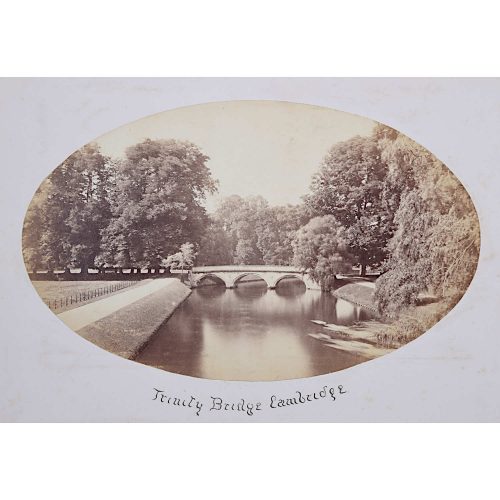
Trinity Bridge, Cambridge
Albumen print of a photograph, circa 1850 Mounted to board and inscribed 'Trinity Bridge Cambridge'. Trinity Bridge is a stone built tripled-arched road bridge across the River Cam. It was built from Portland stone in 1765 to the designs of James Essex to replace an earlier bridge built in 1651, and is a Grade I listed building. Trinity College is a constituent college of the University of Cambridge, and was founded in 1546 by King Henry VIII. Trinity is one of the oldest and largest colleges in Cambridge, with the largest financial endowment of any college at either Cambridge or Oxford. Trinity has some of the most distinctive architecture within Cambridge, with its Great Court reputed to be the largest enclosed courtyard in Europe. Condition: generally very good. If you’d like to know more, please email info@manningfineart.co.uk or call us on 07929 749056. -
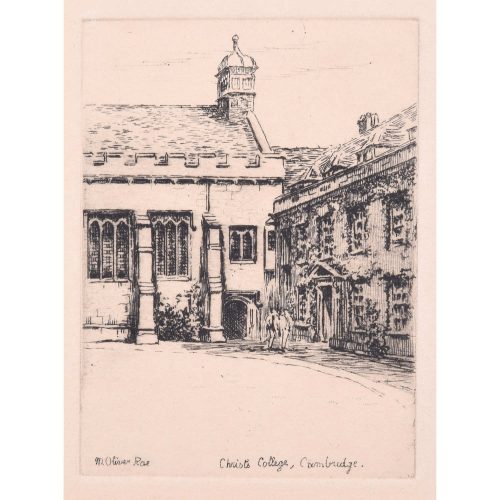
M. Oliver Rae (1868-1956)
Christ's College, Cambridge
Etching 11x8cm Click here for biographical details and other pictures by the artist. If you are interested email info@manningfineart.co.uk or call us on 07929 749056. -

M. Oliver Rae (1868-1956)
Wadham College, Oxford
Etching Click here for biographical details and other pictures by the artist. 11x8cm If you are interested email info@manningfineart.co.uk or call us on 07929 749056. -
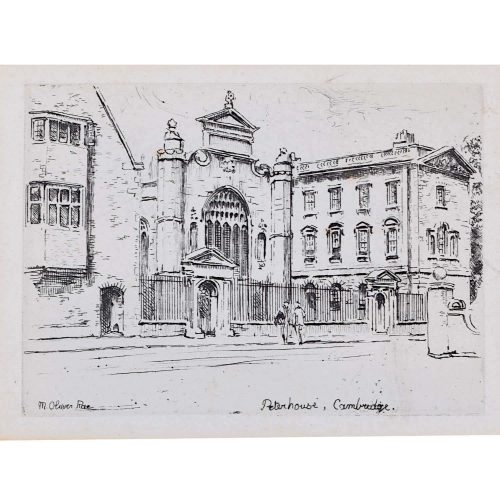
Mabel Oliver Rae (1868-1956) Peterhouse Cambridge
Etching 11x9 cm The rich tones of the etchings make them as popular today as when they were first made. Click here for biographical details and other pictures by the artist. If you are interested email info@manningfineart.co.uk or call us on 07929 749056. Condition: Generally very good. -
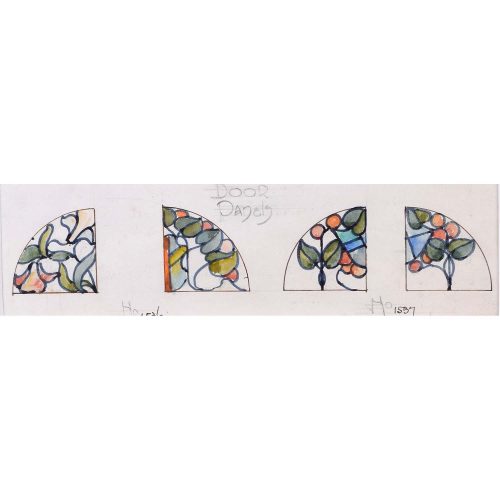
Florence Camm (1874-1960) Design for Stained Glass Window For Door Panels
Watercolour 5x18.5 cm Design for TW Camm & Co., Smethwick, Birmingham For biographical details and other works by the artist click here. If you are interested email info@manningfineart.co.uk or call us on 07929 749056. Conditon: Good. In conservation mount and in plastic sleeve for protection. -
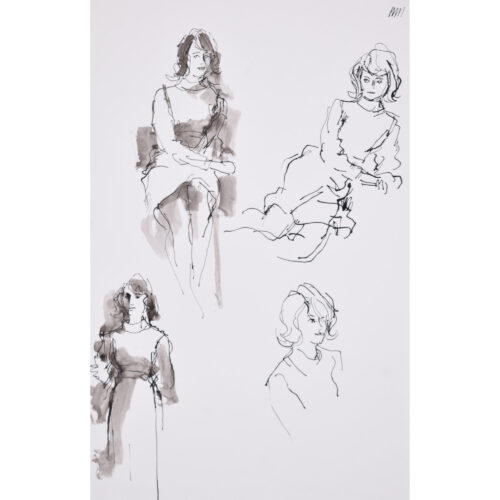
Peter Collins ARCA (1923 - 2001)
Figure Studies
Ink and wash 44 x 28 cm Provenance: the artist's studio sale. Four characterful and intimate clothed studies of a model with voluminous 1960s hair. Collins' first job was in the commercial studio of an advertising agency. World War II interrupted his career and he joined the Royal Artillery, teaching painting and drawing in the Education Corps - whilst simultaneously teaching at St Martin's School of Art, part time. Following the war, Collins studied at the Royal College of Art, winning a scholarship. He then worked as a commercial artist, producing some well-known posters for clients including British Railways and British European Airways. He was the Art Director at Odhams Press and spent time designing for both ICI and Shell. With his wife Georgette, he created the 'Bacombe Galleries' in Sussex, converting a group of buildings into a gallery space. In 1975 they developed the Stanley Studios in Chelsea, which were scheduled for redevelopment, into a combined artists' studio and residence. Moving into the Stanley Studios allowed the Collinses to immerse themselves in Chelsea's art scene, and they proceeded to fill the studios with art, antiques, sculpture, and other curios. Condition: generally very good. If you are interested, please email info@manningfineart.co.uk or call us on 07929 749056. Click here for other works by Peter Collins. -
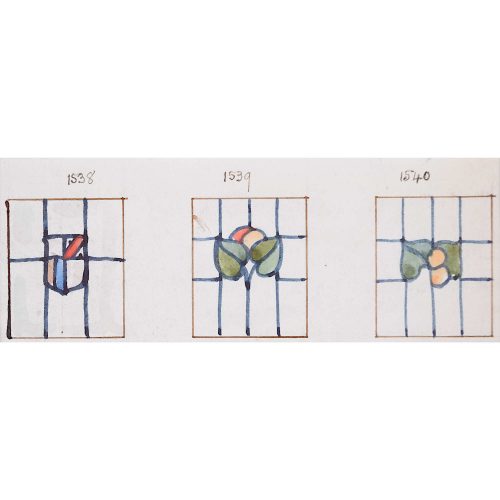
Florence Camm (1874-1960) Design for domestic stained glass window
Watercolour 14x5 cm Design for TW Camm & Co., Smethwick, Birmingham Numbered 1538,1539,1540 The Camms were stained glass designers who exhibited 48 times at the Royal Academy and also exhibited at The Walker Art Gallery in Liverpool, The Royal Scottish Academy and Royal Birmingham Society of Artists. Following the death of her father, Florence Camm became chief designer at TW Camm with many commissions both nationally and internationally. Florence Camm was the daughter of Thomas William Camm (1839-1912) who founded the stained glass business T W Camm in High Street Smethwick. From 1892-1911 she studied at The Birmingham Municipal School of Art which, unusually for the time, encouraged girls to attend the life drawing classes – drawing fully nude female models and partially draped male models – thus explaining Camm’s skill with the human figure. Students were encouraged to execute their drawings for designs, thus giving them the skills to set up as manufacturers in Birmingham’s Jewellery Quarter. The arts and crafts designer Henry Payne was an influential tutor for Camm, being one of the most influential teachers at the BMSA who was working as a stained glass designer at the time; one of his most notable commissions was a painted mural illustrating Tudor History for the Houses of Parliament in 1908. Following the death of TW Camm, Florence and her brothers – Walter and Robert – took over the business and Florence did most of the designing. If you are interested email info@manningfineart.co.uk or call us on 07929 749056. Conditon: Good. In conservation mount and in plastic sleeve for protection. -
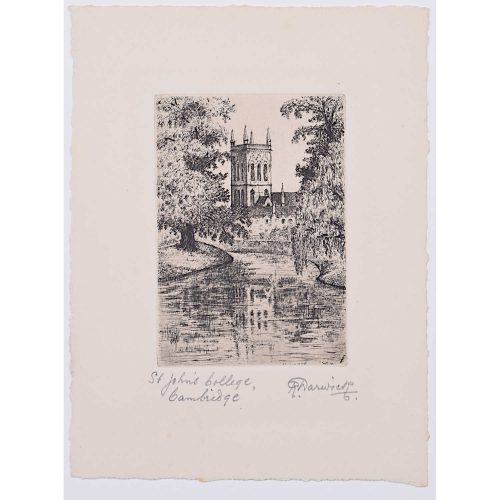
R Warwick (British, fl c. 1900-1930) St John's College Cambridge
Etching size: 9x6cm; sheet size 15x12cm On deckle-edged paper If you are interested email info@manningfineart.co.uk or call us on 07929 749056. Condition: Generally very good condition. -
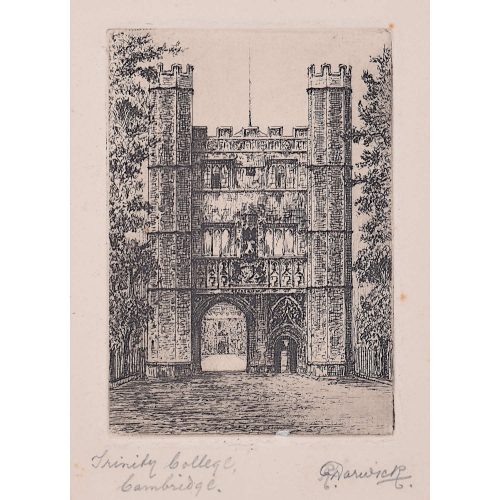
R Warwick (British, fl c. 1900-1930) Trinity College Cambridge, Great Gate
Etching size: 9x6cm; sheet size 15x12cm On deckle-edged paper If you are interested email info@manningfineart.co.uk or call us on 07929 749056. Condition: Generally good condition, some foxing to sheet, but scarcely within image area. -
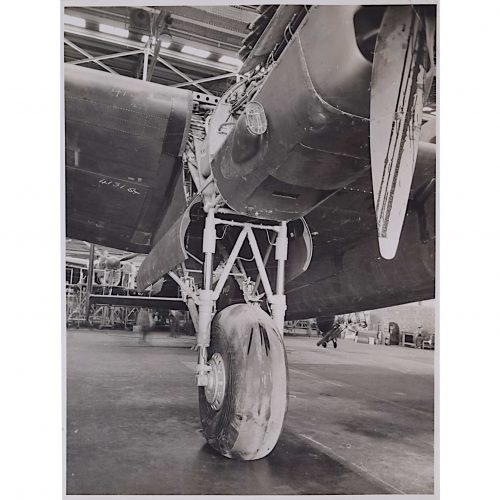
Lancaster Bomber W4131 Undercarriage
Original silver gelatin photograph c. 1943 21 x 16 cm Stamped 'Copyright Aeroplane Magazine' Stamped 'Passed by Censor' Rare; we have been unable to trace another copy of this photograph in any collection. W4131 served with 50 Squadron, based at Swinderby. On 18 August 1942 W4131 crash landed at Swinderby on return from a training flight at 17.15. The wheels were retracted too soon on take-off by pilot SGT PH Blaskey, damaging the undercarriage. The pilot and crew were uninjured. It is possible that this photograph records repairs to the undercarriage following this incident. On 28 March 1943 W4131 was involved in another incident, again at Swinderby. Although the aeroplane landed safely, the airframe was found to have been strained during a fighter affiliation exercise as a result of violent movements. On 1 June 1943 while serving with 1660 HCU (Heavy Conversion Unit) the undercarriage collapsed following an engine failure during take-off from Swinderby. The aircraft was written off on 12 June 1943. Condition: good. Provenance: from the collection of Philip J R Moyes, author of many books on the RAF, most notably The Pictorial History which ran to several volumes. -
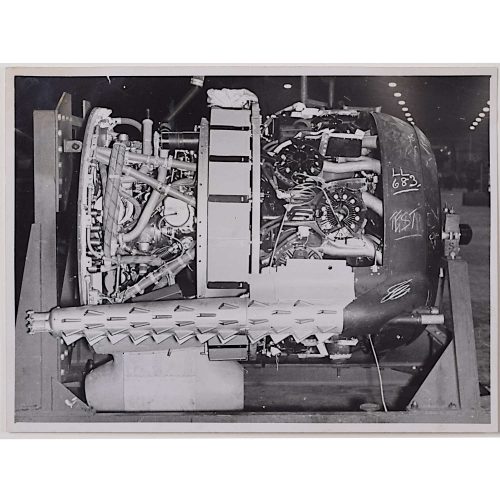
Lancaster bomber LL683 General View of Hercules Power Egg
Silver Gelatin photograph 17 December 1943 12 x 16 cm LL683 JI-P was a Lancaster II and therefore fitted with Bristol Hercules engines rather than the Rolls-Royce Merlin. 350 aircraft were outfitted thus, as a result of fears of shortages of the Merlin. The Hercules came complete as a 'power egg' which is a modular engine installation including ancillary equipment which could be swapped over rapidly for maintenance purposes. LL683 was assigned to 514 Squadron RAF, stationed at Waterbeach from December 1943 with an operational strength of thirty aircraft. The squadron eventually received sixty-seven such Lancasters (fifty-nine of which were destroyed by enemy action or accident). Stationed at Waterbeach from December 1943, the squadron had previously been stationed at RAF Foulsham in Norfolk. Three of the bombers made the move between the two airfields via a bombing raid on Berlin, the crew members' kit - including bicycles - also travelling via Berlin. LL683, serving with 514 Squadron RAF and stationed at Waterbeach had John Clare Gilbertson-Pritchard as pilot for a bombing raid on Stuttgart on the night of 01/02 March 1944. Back in action on 30/31 March for a 795-bomber raid raid on Nurnberg and piloted by W/O WL McGown, the aeroplane suffered a forced landing at Sawbridgeworth; all crew members survived though one broke his back and never flew again. Condition: good. Provenance: from the collection of Philip J R Moyes, author of many books on the RAF, most notably The Pictorial History which ran to several volumes. -
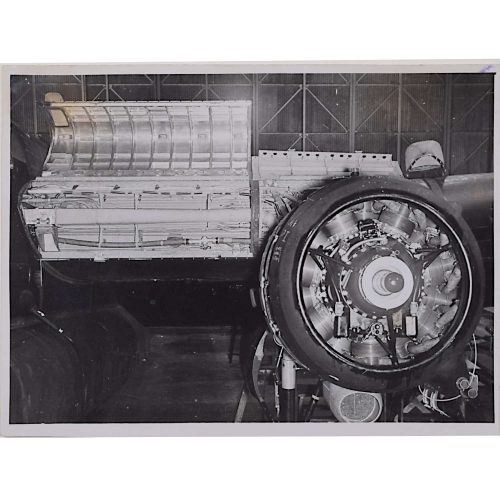
Lancaster Bomber De-icing System
Silver Gelatin photograph 1943 12 x 16 cm Stamped to reverse 'This photograph has been passed by censor. 17 Dec 1943' 'Copyright This TP copyright illustration from "The Aeroplane" must not be reproduced without the written permission of Temple Press Ltd.' 'De-icing system. - Cold air is passed into the flame-trap exhaust and forces hot air into wing leading edge.' Condition: good. Provenance: from the collection of Philip J R Moyes, author of many books on the RAF, most notably The Pictorial History which ran to several volumes. -
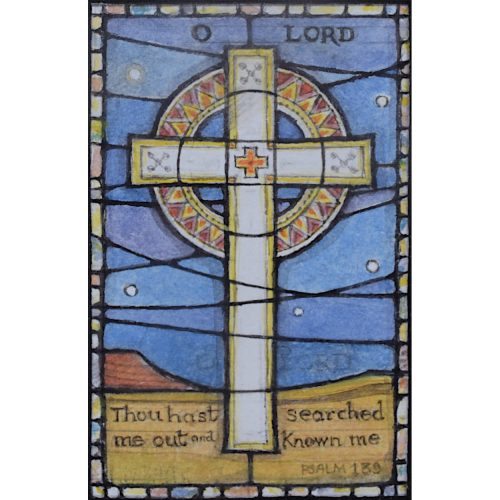
Jane Gray (b.1931)
Warrington Hospital Chapel, Design for Stained Glass Window (1984)
Watercolour 7.5 x 5 cm Dated, detailed in artist’s hand and studio label verso.Warrington Hospital was originally built as an isolation hospital in 1893. The Warrington Union Workhouse Infirmary was built on the site shortly after in 1898, and it was occupied by the Whitecross Military Hospital during the First World War. It wasn’t until 1930, that the infirmary officially became the Warrington Borough General Hospital. Gray’s design for this window in the hospital’s chapel wonderfully demonstrates her colourful, modern style and features the Cross suspended between land and sky, and a line from Psalm 139: ‘O Lord, Thou hast searched me out and known me’. This was one of Gray’s simplest but most favourite window designs, it was installed in the chapel in 1984.
Provenance: the artist’s studio sale. Literature: Jane Gray, Playing with Rainbows. (Shropshire: Ellingham Press, 2011), pp.23, 77. Condition: very good. If you are interested, please email info@manningfineart.co.uk or call us on 07929 749056. For other works by Jane Gray and more information about her, please click here. -
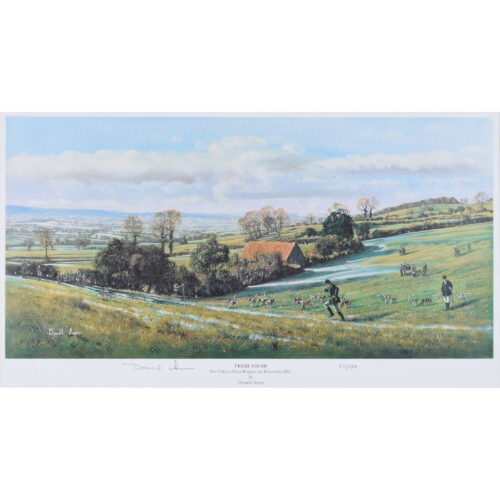
Donald Ayres (b. 1936)
The Clifton Foot Beagles on Butcombe Hill
Lithograph 24 x 44 cm Signed and numbered 423/500. A lithograph of the Clifton Foot Beagles, now the Chilmark and Clifton Foot Beagles. Donald Ayres is a landscape painter specialising in country sports such as hunting, shooting, and fishing. His work has been exhibited in most of the major commercial galleries in Britain, as well as many in Europe and America. Condition: very good. If you are interested, please email info@manningfineart.co.uk or call us on 07929 749056. Click here for other hunting pictures. -

after Samuel Buck (1696 - 1779) and Nathaniel Buck (active 1724 - 1759)
The South View of Bindon Abbey, in the County of Dorset (1733)
Engraving 20 x 37 cm An engraved view of Bindon Abbey, a Cistercian monastery on the River Frome in Dorset. The monastery was founded in 1149 by William de Glastonia on the site since known as Little Bindon near Bindon Hill. In 1172 the monastery moved to a site near Wool, and was supported by the house of Plantagenet. The abbey was scheduled for Dissolution in 1536, and finally dissolved in 1539. Only ruins remain. Samuel and Nathaniel Buck were brothers and notable 18th century architectural artists, best known for their depictions of ancient castles and monasteries entitled 'Buck's Antiquities' and those of townscapes of England and Wales, ''Sea-Ports and Capital Towns''. Little is known about the brothers' lives. Samuel was born in Yorkshire and died in penury in London in 1779, and was buried in the churchyard of St Clement Danes. Nathaniel pre-deceased him, dying between 1759 and 1774. Condition: generally good; some age toning; mounted to board; sheet trimmed outside platemark. If you are interested, please email info@manningfineart.co.uk or call us on 07929 749056. -

D L Hadden
Design for Hepplewhite Mahogany Settee
Watercolour and pencil 18x26cm For biographical details and other works by the artist click here. If you are interested email info@manningfineart.co.uk or call us on 07929 749056. -
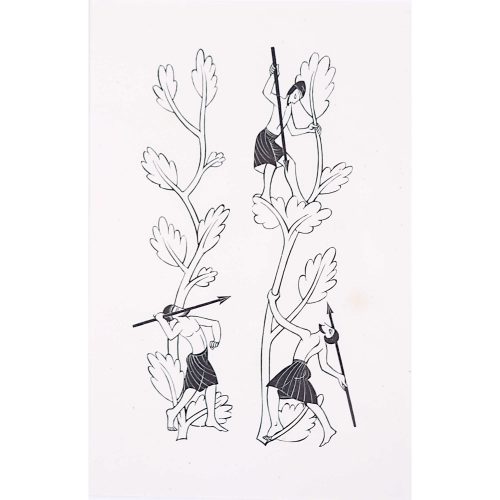
Eric Gill
Border for The Canterbury Tales (1929) - Three Men with Spears
Woodblock Print Published Hague & Gill 1934 in an unnumbered edition of 300 23x21cm Following Chichester Technical and Art School, Gill moved to London in 1900 to train with the ecclesiastical architects W D Caroe. Finding architecture somewhat pedestrian he took stonemasonry lessons at Westminster Technical Institute and calligraphy lessons at the Central School of Arts and Crafts, coming under the influence of Edward Johnson, the designer of the London Underground's own typeface. In 1903 he ceased his attempts to become an architect, instead becoming a monumental mason, letter-cutter and calligrapher. Based in Ditchling, he began direct carving of stone figures, the semi-abstract figures taking their influence from mediaeval statuary, mixed with influences from Classical statuary from the Greeks and Romans, with a little post-Impressionism added in. With major commissions from Westminster Cathedral for its Stations of the Cross (1914), a series of War Memorials including the Grade II* memorial in Trumpington, and three of the sculptures for Charles Holden's 1928 headquarters of London Underground at 55 Broadway, St James's, and a series of sculptures for the new 1932 Broadcasting House. The list continues. Never one to rest on his laurels, he was at the same time engaged in typographical adventures. He had collaborated with Edward Johnson on the latter's initial thoughts on his London Transport typeface, but in 1925 designed Perpetua on his own, and Gill Sans between 1927-30. For the Golden Cockerel Press he created, in 1929, a bolder typeface to complement wood engravings. And of course Gill was publishing decorated books. His 1929 Canterbury Tales was an epic work, with a whole series of beautiful wood engravings such as this one. The present print is from the 1934 edition for Faber & Faber ('Engravings 1928-1933 by Eric Gill') he printed with his son-in-law, Rene Hague, produced with the original engraved wood blocks. If you are interested email info@manningfineart.co.uk or call us on 07929 749056. Condition: Generally very good condition. -
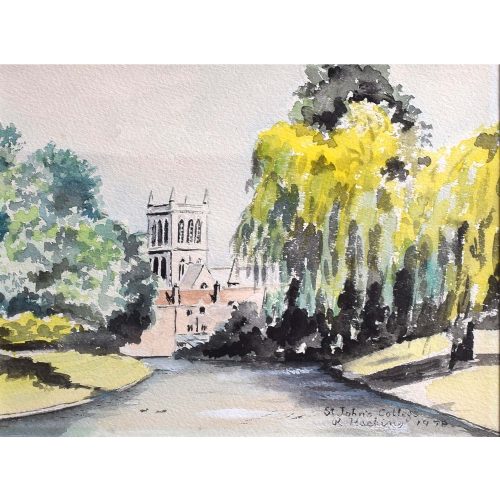
R Hacking
St. John’s College, Cambridge (1978)
Watercolour 17x25cm If you are interested email info@manningfineart.co.ukor call us on 07929 749056. Condition: Good. -
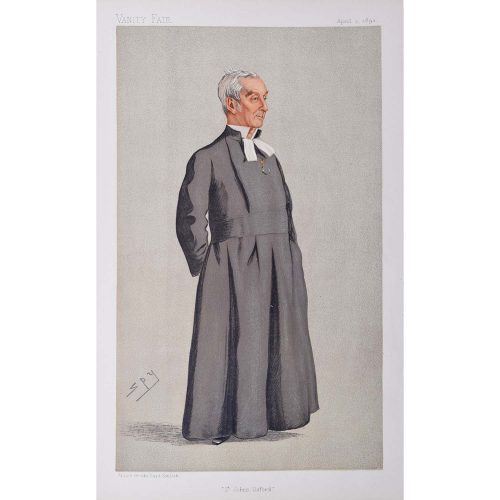
Vanity Fair Spy Magazine President of St john's College Oxford
1 April 1893 Lithograph If you are interested email info@manningfineart.co.uk or call us on 07929 749056. Condition: Good. -
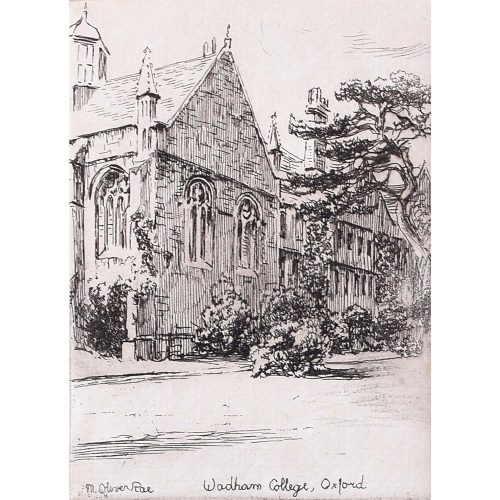
Mabel Oliver Rae (1868-1956) Wadham College Oxford
Etching Signed and titled in pencil 11x8.5 cm The rich tones of the etchings make them as popular today as when they were first made. Click here for biographical details and other pictures by the artist. If you are interested email info@manningfineart.co.uk or call us on 07929 749056. Condition: Good. -
Out of stock
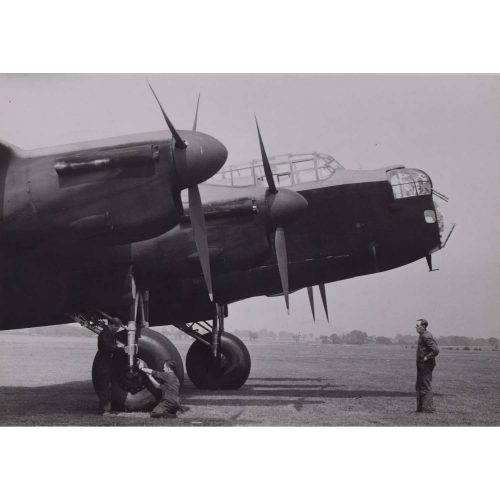
Lancaster Bomber
Original Silver Gelatin photograph, July 1942 11 x 16 cm Stamped to reverse 'Passed for Publication 2 July 1942 Press and Censorship Bureau', 'Public Relations Branch MAP'. A fine photograph; two erks are adjusting the starboard undercarriage of a Lancaster bomber whilst being supervised - the supervisor apparently with his hands in his pockets in very unmilitary fashion! The sun is high in the sky, casting a rather fine shadow under the bomber. -
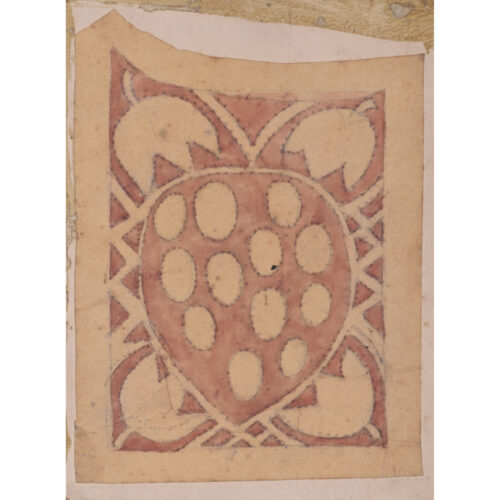
Reginald Hallward (1858 - 1948)
Design for a banner in the shape of a strawberry
Watercolour 14 x 10 cm A design for a banner featuring a strawberry motif. The design, like many others by Hallward, is likely influenced by in the Arts and Crafts style popularised by William Morris in the 1890s. Reginald Hallward was born on the Isle of Wight, and was a painter, poet, glassmaker and book designer. He is best known for his stained glass window designs and the tempera murals he painted in several churches. A great exponent of the English Arts and Crafts movement, he often used black paint for outlines, rather than leaded glass. A consumate craftsman, he insisted on painting, firing and leading with his own hands. Condition: mounted to board, old glue marks to margins, and some loss of colour; otherwise good. If you are interested, please email info@manningfineart.co.uk or call us on 07929 749056. Click here for other pictures by Reginald Hallward. -
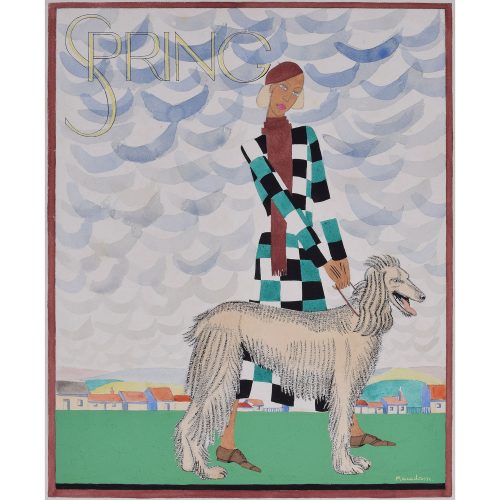
Margaret Macadam (1902-1991)
Spring: Lady with an Afghan Hound
Signed Mixed media c.1930 28x23cm If you are interested email info@manningfineart.co.uk or call us on 07929 749056. -

What to Eat and Why
Original Poster 51x76cm If you are interested email info@manningfineart.co.uk or call us on 07929 749056. -
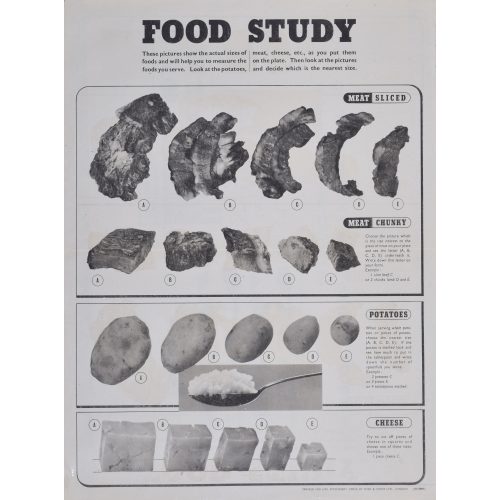
Food Study
Original Poster 51x76cm If you are interested email info@manningfineart.co.uk or call us on 07929 749056. -
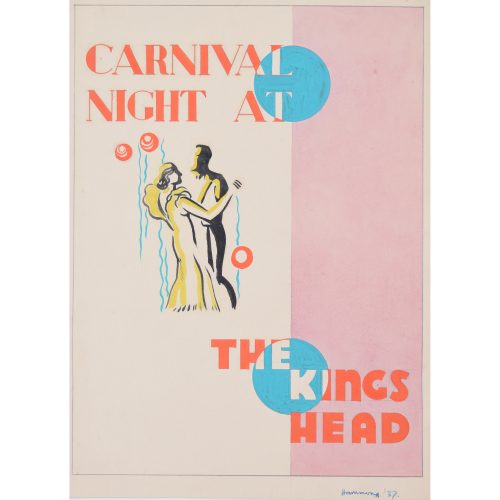
Hammond (British, fl. 1930s) Original design for poster and flyer for Carnival Night at the King's Head
26x19 cm Gouache, 1937 Sadly nothing is known of the life of the artist of this series of rather fine Art Deco designs we have listed. An elegant couple dance in this well composed design. Designed to be lithographed, the artist has restricted himself to four colours. If you are interested email info@manningfineart.co.uk or call us on 07929 749056. Condition: Generally very good. -
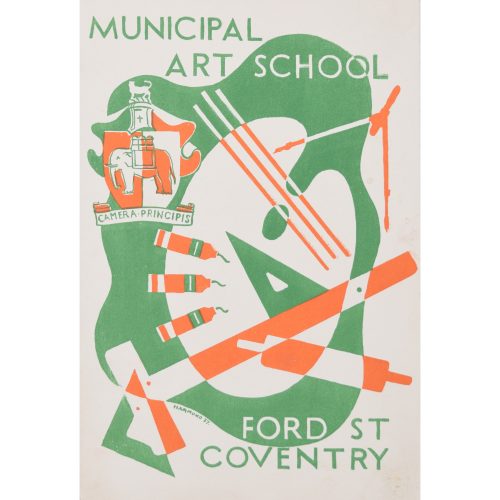
Hammond (British, fl. 1930s) Design for Municipal Art School Brochure
21.5x18 cm Lithograph drawn directly to stone, 1937 Sadly nothing is known of the life of the artist of this series of rather fine Art Deco designs we have listed. This is drawn directly onto the stone, a considerable skill in itself, and in just two colours in order to limit the cost of the lithography. If you are interested email info@manningfineart.co.uk or call us on 07929 749056. Condition: Generally very good. -
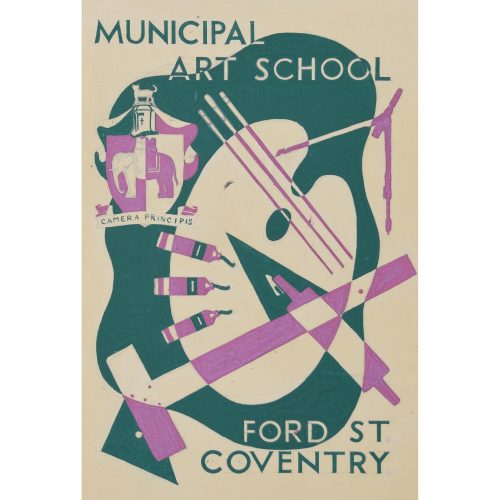
Hammond (British, fl. 1920s) Original artwork for brochure for Municipal Art School, Ford St, Coventry, England UK
21.5x14 cm Gouache, c. 1937 Sadly nothing is known of the life of the artist of thes series of rather fine Art Deco designs we have listed. If you are interested email info@manningfineart.co.uk or call us on 07929 749056. Condition: Generally very good. -
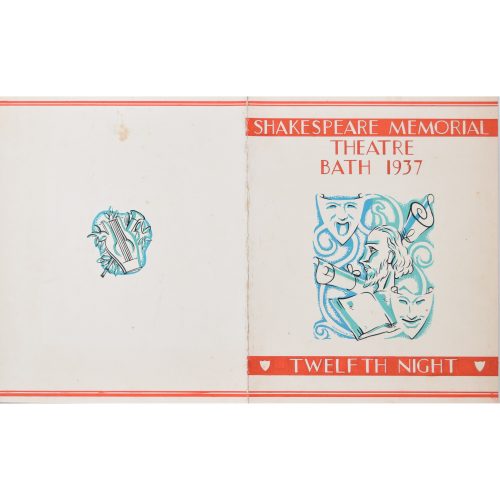
Hammond (British, fl. 1920s) Original artwork for Design for Shakespeare Twelfth Night programme to be held in Bath
26x21 cm Gouache, 1937 Sadly nothing is known of the life of the artist of thes series of rather fine Art Deco designs we have listed. If you are interested email info@manningfineart.co.uk or call us on 07929 749056. Condition: Generally good; small stain to reverse as illustrated in photograph; fold to centre as intended by artist. -
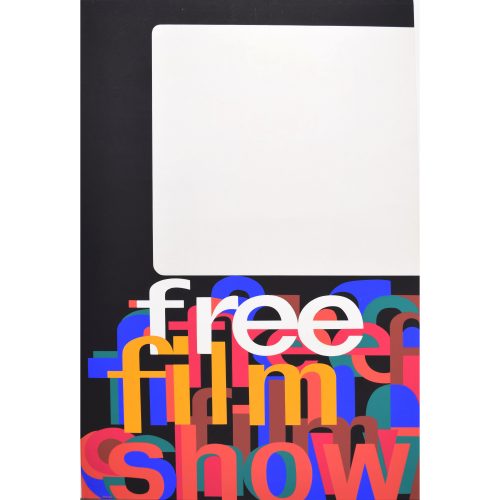
Anonymous (British, 20th Century) Free Film Show
Original Poster 75x50cm c. 1960s An excellent and colourful piece of typography. If you are interested email info@manningfineart.co.uk or call us on 07929 749056. Condition: Excellent. -
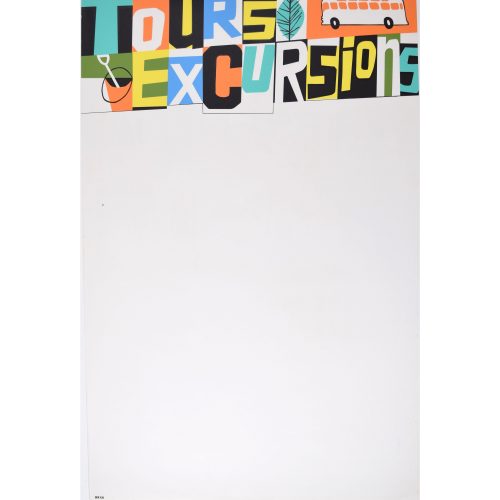
Anonymous Tours and Excursions
Original Coach Poster 75x50cm Cool and crazy mid-century lettering. Poster with area for completion with details of a coach tour. If you are interested email info@manningfineart.co.uk or call us on 07929 749056. Condition: Excellent. -
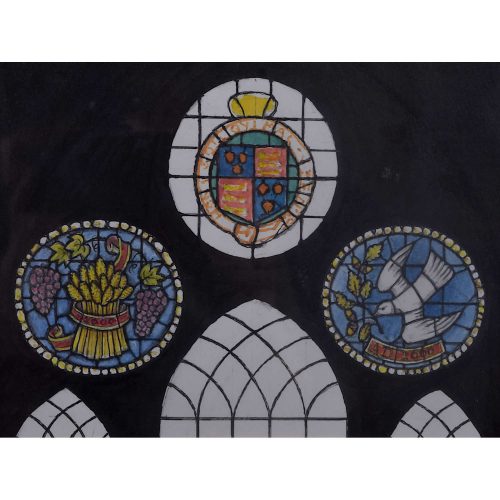
Jane Gray (b.1931)
St Mary’s Church, Longnor, Shropshire, Design for Stained Glass Millennium Commemoration Window (2000)
Watercolour 12.5 x 17.5 cmSigned, dated and studio stamp verso.
St Mary’s Church, Longnor, was originally built as a chapel to Condover around 1280 A.D. It was then a private chapel to the Corbett family of Longnor Hall, before becoming the parish church. These designs for two stained glass roundel windows in the East window were commissioned to commemorate the Millennium. This window was installed in 2001.
Provenance: the artist’s studio sale. Literature: Jane Gray, Playing with Rainbows. (Shropshire: Ellingham Press, 2011), p.87. Condition: very good. If you are interested, please email info@manningfineart.co.uk or call us on 07929 749056. For other works by Jane Gray and more information about her, please click here. -
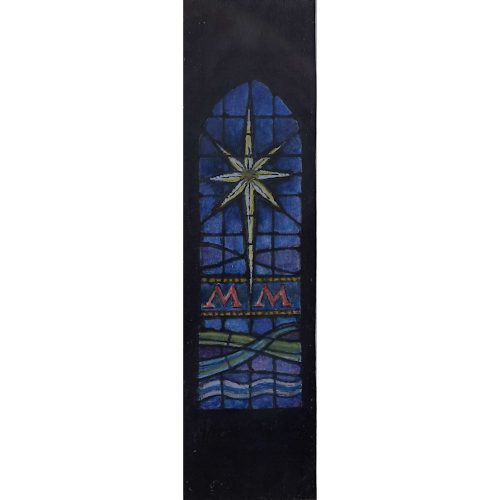
Jane Gray (b.1931)
Christ Church, Oxon, Shrewsbury, Design for Millennium Stained Glass Window (1999)
Watercolour 12.5 x 3.5 cmSigned, dated and studio stamp verso.
Christ Church in Oxon, Shrewsbury is a fine example of an early Victorian church, built in 1854 by Edward Haycock Snr in the Early English style with many lancet features. This stained glass window above the chancel arch was commissioned to celebrate the new millennium, and centres on the star of Bethlehem against a coastal backdrop. This window was installed in 2001.
Provenance: the artist’s studio sale. Literature: Jane Gray, Playing with Rainbows. (Shropshire: Ellingham Press, 2011), p.86. Condition: very good. If you are interested, please email info@manningfineart.co.uk or call us on 07929 749056. For other works by Jane Gray and more information about her, please click here. -
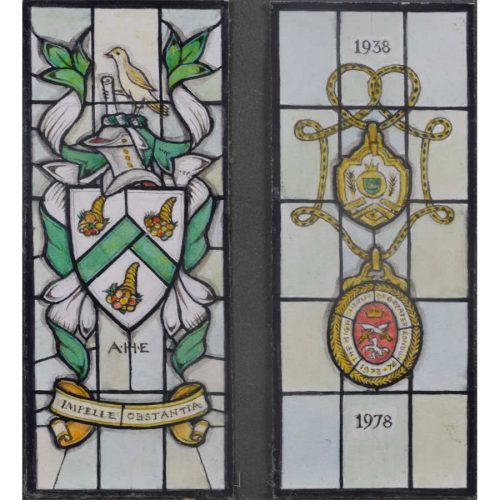
Jane Gray (b.1931)
Design for Stained Glass Panel in a Private House (1978)
Watercolour 10 x 8 cm Signed and dated verso.This design is for a window commemorating Arthur Henry Edmond Esq., of Ranelagh, 50 Russell Road, Moor Park, Northwood, Middlesex, who held the position of High Sheriff of Greater London between 1973-4. The Clan from whom the Arthurs family descends began among the ancient Dalriadan kingdom of the west coast of Scotland. Their name comes from the Celtic personal name, Arthur, which is of various and often disputed etymology. The personal name Arthur may be derived from some early cognate of the Gaelic “art” and the Welsh “arth”, meaning “bear” and may indicate early Celtic worship of the bear or one who has a high regard for the bear’s virtuous qualities. The Latin motto, ‘Impelle obstantia’ (meaning, 'Thrust aside obstacles’) would originally have acted a war cry or slogan. Mottoes first appeared in coast of arms in the 14th and 15th centuries, but were not in general use until the 17th century. The office of High Sheriff of Greater London was created in 1965 and granted armorial bearings 1966. The blazon of the arms, as depicted here is: ‘Gules, two seaxes in saltire argent, pommels and hilts or, between in chief a Saxon Crown or and in base a horse courant argent’.
Provenance: the artist’s studio sale. Condition: very good. If you are interested, please email info@manningfineart.co.uk or call us on 07929 749056. For other works by Jane Gray and more information about her, please click here. -
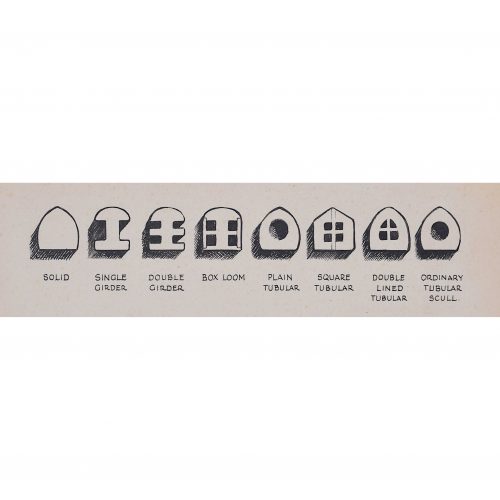
Laurence Dunn (1910-2006)
Fashions in Oars and Sculls
6 x 25 cm Ink on paperThis series of eight neat, ink illustrations depicts, as the title suggests, the various fashions of oars and sculls. These fashions include the Solid, Single Girder, Double Girder, Box Loom, Plain Tubular, Square Tubular, Double Lined Tubular and Ordinary Tubular Scull designs.
Laurence Dunn (1910-2006) was a well-known British marine artist and writer known for his depictions of ships. He grew up in Devon, where he practised drawing passing ships, and went on to study at the Central School of Art. He then worked for shipbuilding firm John I. Thornycroft & Company Limited, where he contributed to the design of the Royal Yacht. During the Second World War, Dunn worked in naval intelligence. In the early 1960s, he created many line drawings of Atlantic ocean liners.
Upon his death in 2006, the World Ship Society published the following obituary:
DUNN, Laurence. [December 15 2006 — Lloyds List] Many readers will be saddened by the death of well-known marine artist and writer Laurence Dunn in his 97th year. A man of encyclopaedic knowledge, he began his lifelong love of ships in Brixham, where he meticulously recorded passing traffic with the exquisitely accurate line drawings which later became something of a trademark. While studying at London’s Central School of Art his work was noticed by the Southern Railway, which commissioned profiles of its fleet, and this in turn led to work for Orient Line, where he also designed the well-known corn-coloured hull, and later Thorneycroft, where he helped with shaping draft plans for a new royal yacht. During the second world was he worked for naval intelligence at the Admiralty, where his technique did much to improve recognition standards, and greatly expanded his shipping clientele, becoming personally known to many chairmen. As well as the shipping press he worked for mainstream publications such as Everybody’s, Sphere and the upmarket comic Eagle. Through his many contacts he enjoyed going to sea in a great variety of ships from aircraft carriers to colliers. Laurence wrote several books, starting with ship recognition titles which introduced new standards of layout, but his best known work was probably Passenger Liners, which was widely taken up by the travel trade. His love of Greece, where he was an early publicist of island cruising, let to involvement in reshaping various passenger liners beginning with Greek Line’s OLYMPIA. In later life he designed several sets of shipping stamps for the Crown Agents, produced photographic volumes on Thames and Mediterranean shipping and still found time to enjoy the passing Thames traffic. Our sympathies go to his wife Jennifer, who provided succour to the many ship lovers who beat a path to the welcoming door of their Gravesend home.
-
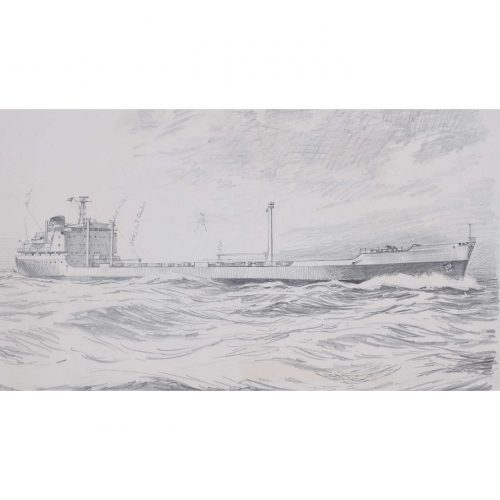
Laurence Dunn (1910-2006)
Coastal Tramp
25 x 38.5 cm Pencil on paperLaurence Dunn (1910-2006) was a well-known British marine artist and writer known for his depictions of ships. He grew up in Devon, where he practised drawing passing ships, and went on to study at the Central School of Art. He then worked for shipbuilding firm John I. Thornycroft & Company Limited, where he contributed to the design of the Royal Yacht. During the Second World War, Dunn worked in naval intelligence. In the early 1960s, he created many line drawings of Atlantic ocean liners.
Upon his death in 2006, the World Ship Society published the following obituary:
DUNN, Laurence. [December 15 2006 — Lloyds List] Many readers will be saddened by the death of well-known marine artist and writer Laurence Dunn in his 97th year. A man of encyclopaedic knowledge, he began his lifelong love of ships in Brixham, where he meticulously recorded passing traffic with the exquisitely accurate line drawings which later became something of a trademark. While studying at London’s Central School of Art his work was noticed by the Southern Railway, which commissioned profiles of its fleet, and this in turn led to work for Orient Line, where he also designed the well-known corn-coloured hull, and later Thorneycroft, where he helped with shaping draft plans for a new royal yacht. During the second world was he worked for naval intelligence at the Admiralty, where his technique did much to improve recognition standards, and greatly expanded his shipping clientele, becoming personally known to many chairmen. As well as the shipping press he worked for mainstream publications such as Everybody’s, Sphere and the upmarket comic Eagle. Through his many contacts he enjoyed going to sea in a great variety of ships from aircraft carriers to colliers. Laurence wrote several books, starting with ship recognition titles which introduced new standards of layout, but his best known work was probably Passenger Liners, which was widely taken up by the travel trade. His love of Greece, where he was an early publicist of island cruising, let to involvement in reshaping various passenger liners beginning with Greek Line’s OLYMPIA. In later life he designed several sets of shipping stamps for the Crown Agents, produced photographic volumes on Thames and Mediterranean shipping and still found time to enjoy the passing Thames traffic. Our sympathies go to his wife Jennifer, who provided succour to the many ship lovers who beat a path to the welcoming door of their Gravesend home.
-
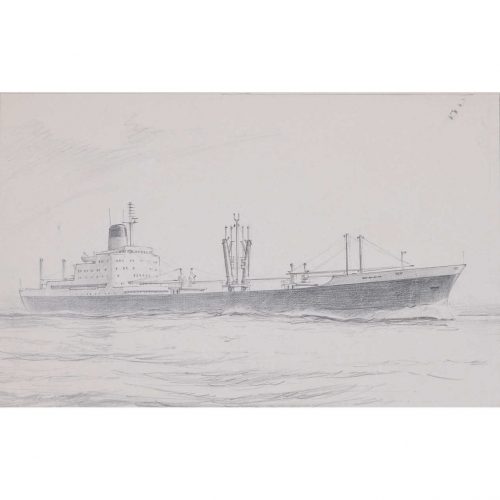
Laurence Dunn (1910-2006)
Coastal Ship
19.5 x 31.5 cm
Pencil on paperLaurence Dunn (1910-2006) was a well-known British marine artist and writer known for his depictions of ships. He grew up in Devon, where he practised drawing passing ships, and went on to study at the Central School of Art. He then worked for shipbuilding firm John I. Thornycroft & Company Limited, where he contributed to the design of the Royal Yacht. During the Second World War, Dunn worked in naval intelligence. In the early 1960s, he created many line drawings of Atlantic ocean liners.
Upon his death in 2006, the World Ship Society published the following obituary:
DUNN, Laurence. [December 15 2006 — Lloyds List] Many readers will be saddened by the death of well-known marine artist and writer Laurence Dunn in his 97th year. A man of encyclopaedic knowledge, he began his lifelong love of ships in Brixham, where he meticulously recorded passing traffic with the exquisitely accurate line drawings which later became something of a trademark. While studying at London’s Central School of Art his work was noticed by the Southern Railway, which commissioned profiles of its fleet, and this in turn led to work for Orient Line, where he also designed the well-known corn-coloured hull, and later Thorneycroft, where he helped with shaping draft plans for a new royal yacht. During the second world was he worked for naval intelligence at the Admiralty, where his technique did much to improve recognition standards, and greatly expanded his shipping clientele, becoming personally known to many chairmen. As well as the shipping press he worked for mainstream publications such as Everybody’s, Sphere and the upmarket comic Eagle. Through his many contacts he enjoyed going to sea in a great variety of ships from aircraft carriers to colliers. Laurence wrote several books, starting with ship recognition titles which introduced new standards of layout, but his best known work was probably Passenger Liners, which was widely taken up by the travel trade. His love of Greece, where he was an early publicist of island cruising, let to involvement in reshaping various passenger liners beginning with Greek Line’s OLYMPIA. In later life he designed several sets of shipping stamps for the Crown Agents, produced photographic volumes on Thames and Mediterranean shipping and still found time to enjoy the passing Thames traffic. Our sympathies go to his wife Jennifer, who provided succour to the many ship lovers who beat a path to the welcoming door of their Gravesend home.
-
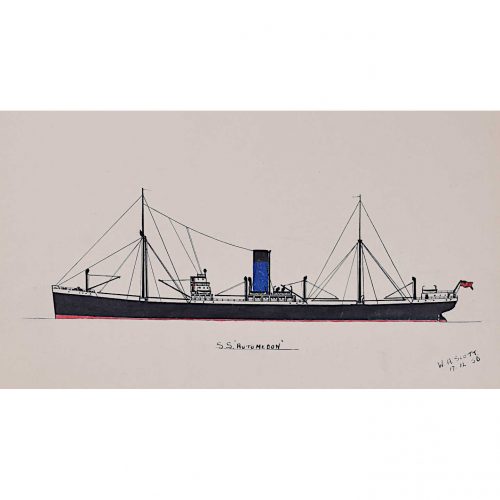
W. A. Scott
S. S. Automedon (1956)
26 x 33.5 cm
Bodycolour and ink on paper Signed l.r.SS Automedon was a Blue Funnel Line refrigerated cargo steamship. She was launched in 1921 on the River Tyne as one of a class of 11 ships to replace many of Blue Funnel's losses in the First World War.
A converted German auxiliary cruiser and merchant raider Atlantis captured and scuttled Automedon in 1940 in the Indian Ocean. Her capture is notable because she was carrying top secret documents addressed to the British Far East Command. Their capture may have influenced Japan's decision to enter the Second World War.
Automedon was Achilles' charioteer in Homer’s Iliad. This was the first of three Blue Funnel Line ships to be named after him. The second was a motor ship launched in 1949 and scrapped in 1972. The third was a motor ship launched in 1948 as Cyclops, renamed Automedon in 1975 and scrapped in 1977.
W. A. Scott was a marine artist known for his highly accurate line and body colour drawings. It is likely that he was an admirer of Laurence Dunn as his work bears much resemblance to Dunn's highly regarded marine drawings.
-
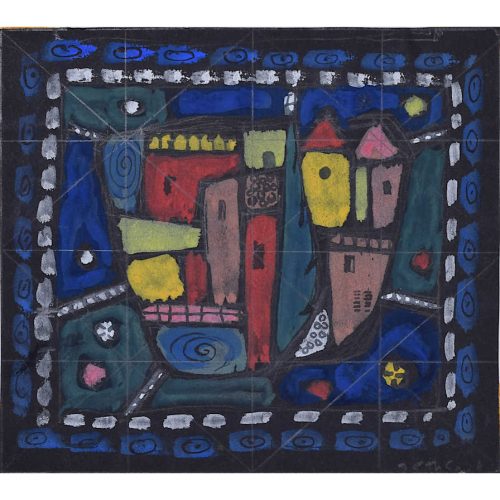
Jane Gray (b.1931)
Mosaic Design
Watercolour 11 x 12.5 cmThis highly modern, colourful and geometric stained mosaic design demonstrates Gray’s wide artistic range and love of employing colour and linear shapes in her work. The central image appears to depict a hamlet-like cluster of abstract houses surrounded by squares of field-like green.
Provenance: the artist’s studio sale. Condition: very good. If you are interested, please email info@manningfineart.co.uk or call us on 07929 749056. For other works by Jane Gray and more information about her, please click here. -
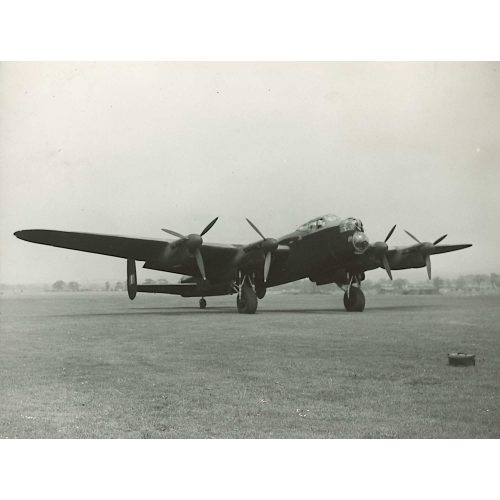
LANCASTER BOMBER AT AN AIRFIELD
Silver Gelatin Photograph for Flight Magazine 15.5x20cm Stamped to reverse "Flight Ref no 18300S Copyright Due Acknowledgment is required if this photograph is reproduced" Almost uniquely, from this series of photographs we have listed, we have been unable to trace another copy of this online. Provenance: from the collection of Philip J R Moyes, author of many books on the RAF, most notably The Pictorial History which ran to several volumes. Inscribed with his initials to reverse, though this has subsequently been concealed with liquid paper. -
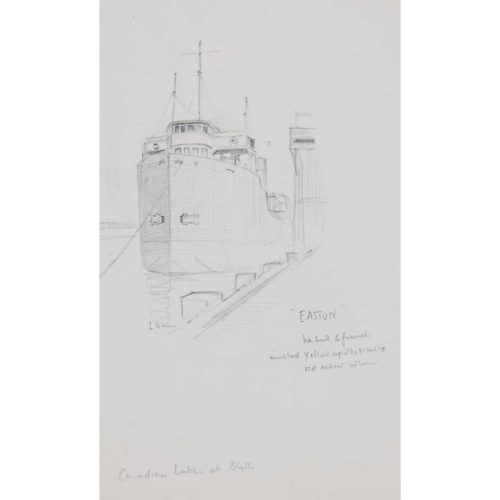
Laurence Dunn (1910-2006)
Drawing of the 'Easton' Canadian laker steamer (c.1950s)
21 x 12.5 cm Pencil Extensively inscribed. Sketch of the ship of the "Easton" in harbour. Dunn has included notes about its colour, presumably for a future painting. Dunn was a well known marine artist and writer. The World Ship Society published the following obituary for Dunn. DUNN, Laurence. [December 15 2006 — Lloyds List] Many readers will be saddened by the death of well-known marine artist and writer Laurence Dunn in his 97th year. A man of encyclopaedic knowledge, he began his lifelong love of ships in Brixham, where he meticulously recorded passing traffic with the exquisitely accurate line drawings which later became something of a trademark. While studying at London’s Central School of Art his work was noticed by the Southern Railway, which commissioned profiles of its fleet, and this in turn led to work for Orient Line, where he also designed the well-known corn-coloured hull, and later Thorneycroft, where he helped with shaping draft plans for a new royal yacht. During the second world was he worked for naval intelligence at the Admiralty, where his technique did much to improve recognition standards, and greatly expanded his shipping clientele, becoming personally known to many chairmen. As well as the shipping press he worked for mainstream publications such as Everybody’s, Sphere and the upmarket comic Eagle. Through his many contacts he enjoyed going to sea in a great variety of ships from aircraft carriers to colliers. Laurence wrote several books, starting with ship recognition titles which introduced new standards of layout, but his best known work was probably Passenger Liners, which was widely taken up by the travel trade. His love of Greece, where he was an early publicist of island cruising, let to involvement in reshaping various passenger liners beginning with Greek Line’s OLYMPIA. In later life he designed several sets of shipping stamps for the Crown Agents, produced photographic volumes on Thames and Mediterranean shipping and still found time to enjoy the passing Thames traffic. Our sympathies go to his wife Jennifer, who provided succour to the many ship lovers who beat a path to the welcoming door of their Gravesend home. -
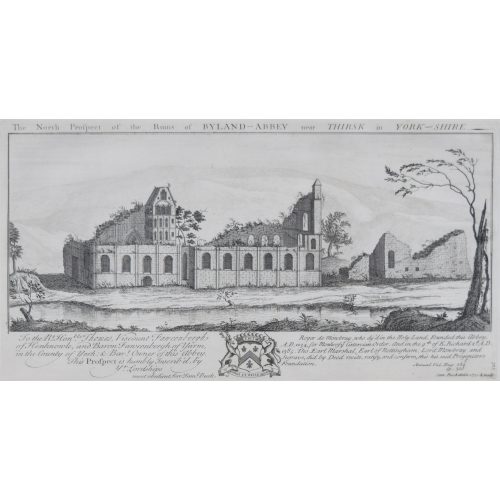
Samuel & Nathaniel Buck
Byland Abbey, Yorkshire
Engraving 37x19cm, c. 1770 "Byland Abbey is an interesting ruin about five miles from Helmsley. It was a fine specimen of ecclesiastical architecture, founded by the monks of Furness, who were driven from their establishment in Lancashire during an incursion of the Scots. When the abbey was dissolved in 1540 its revenues amounted to 238l. 9s. 4d." (Source: The Penny Magazine of the Society for the Diffusion of Useful Knowledge 25 June 1836.) -
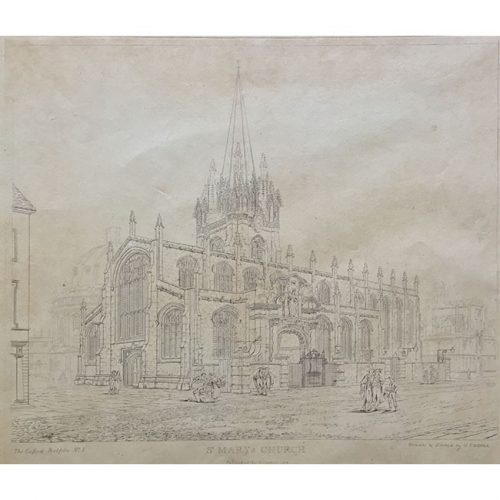
G. Cooper
St. Mary's Church, Oxford
Etching c. 1820 40x47cm From The Oxford Portfolio a series of thirteen views printed on Sepia paper, very rare. If you are interested email info@manningfineart.co.uk or call us on 07929 749056. -
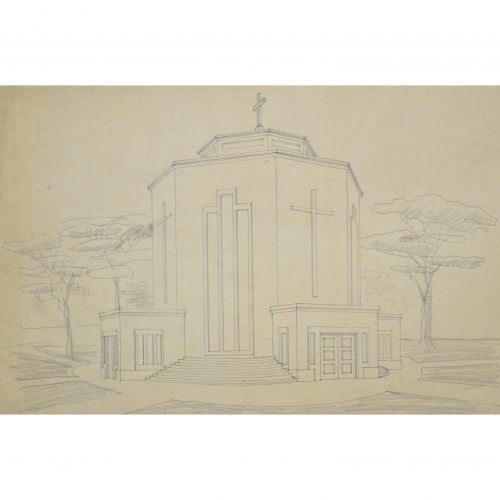
S Clapham (active 1940 - 1960)
A Modernist Church
Pencil 29 x 43 cm A design for an octagonal church in the modernist mid-century style. Clapham was an architect based in Stockwell in London. Condition: generally very good. If you are interested, please email info@manningfineart.co.uk or call us on 07929 749056. Click here for other works by the artist.

